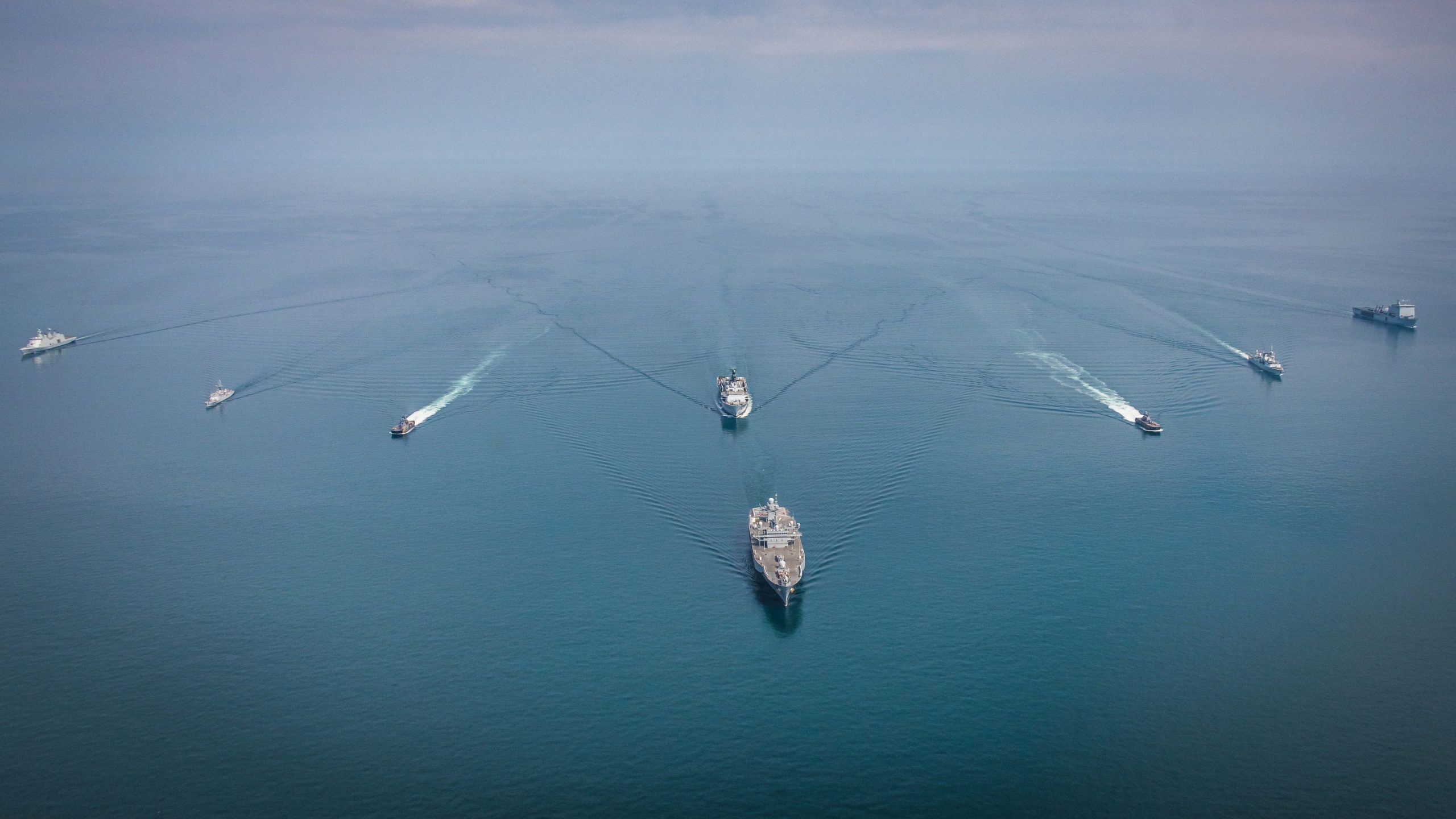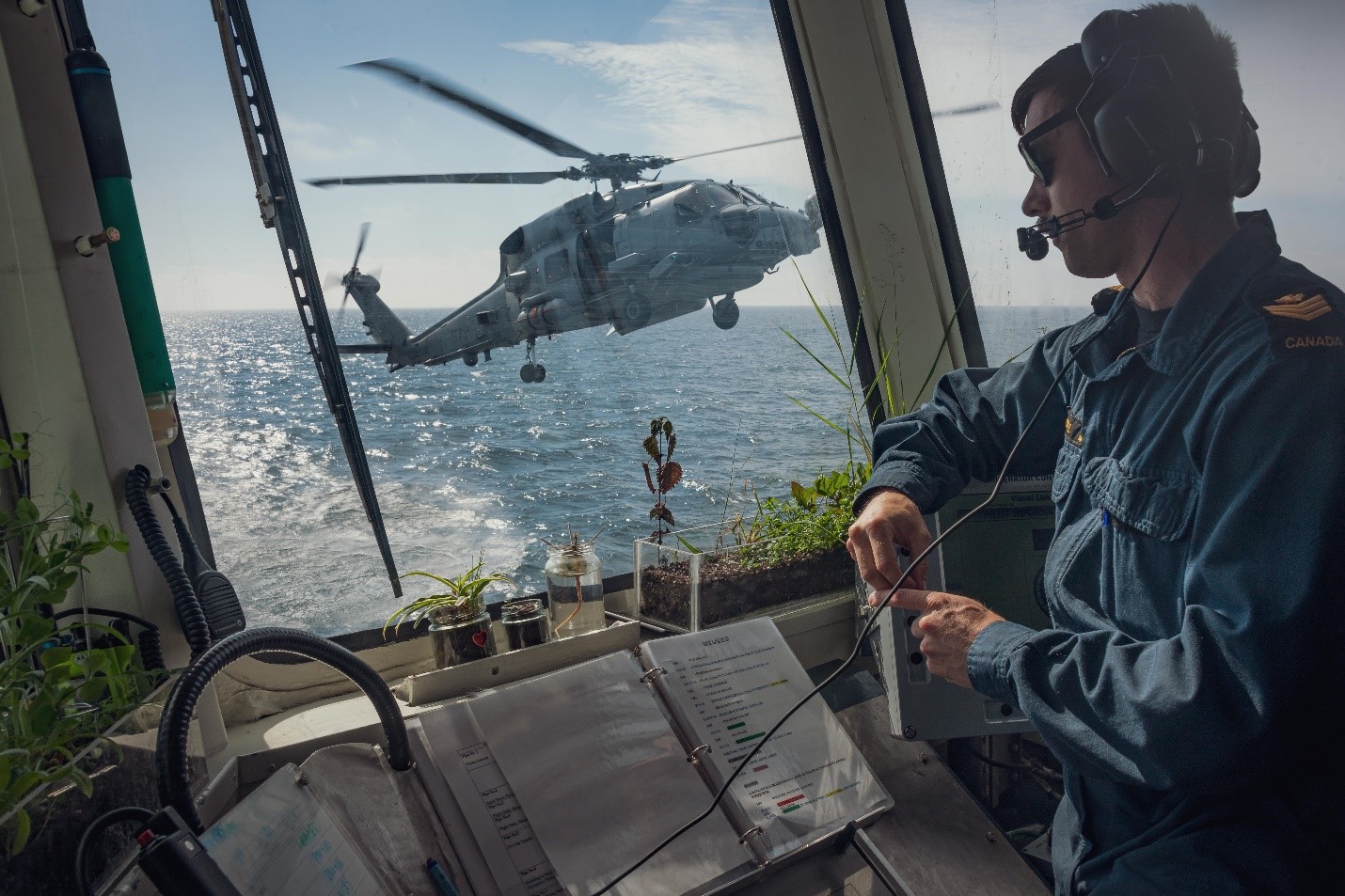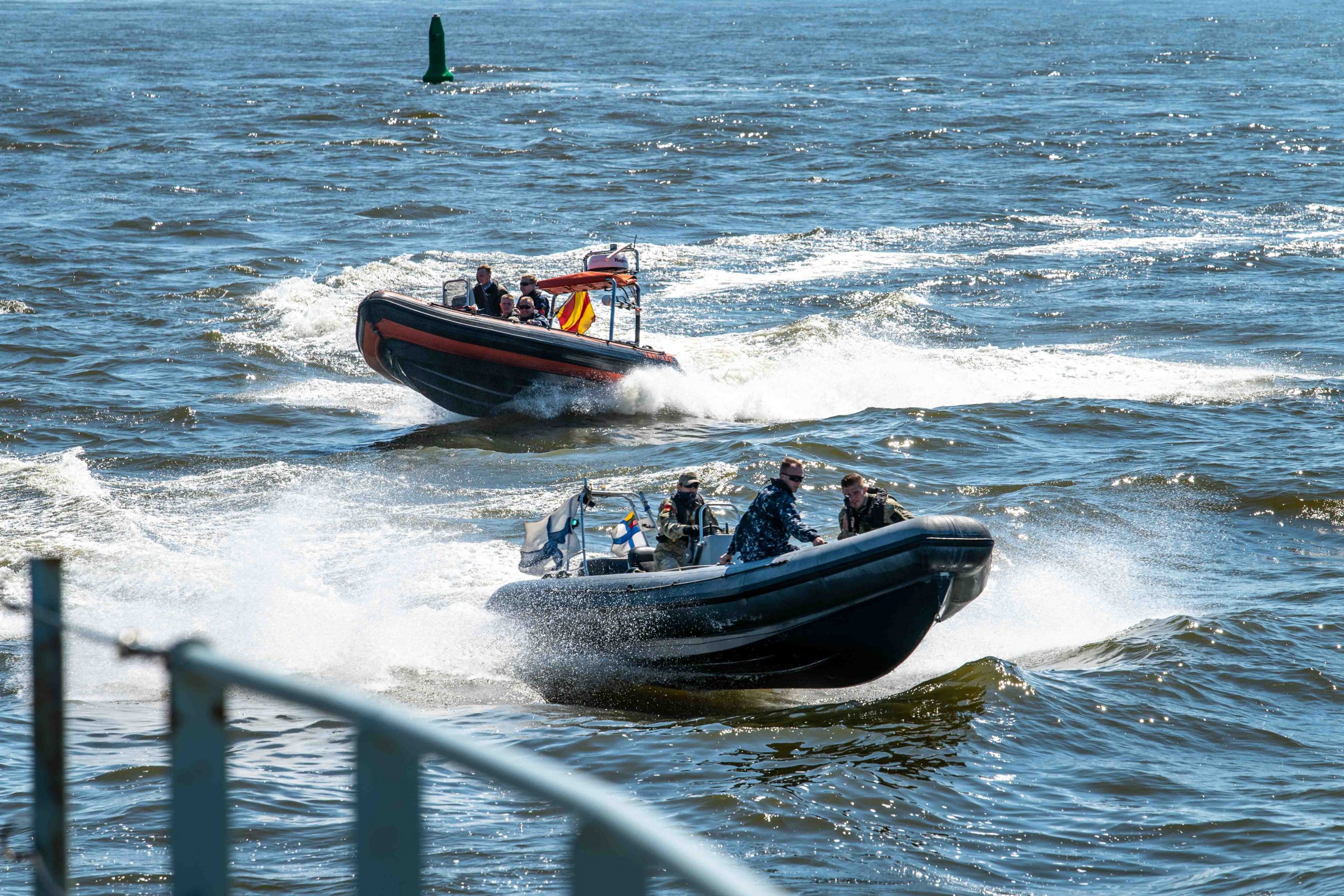
S1 BRYAN UNDERWOOD, CAF PHOTO
Annual multinational training exercise underway in northern Europe
By Joanie Veitch,
Trident Staff
Three Royal Canadian Navy ships are in the Baltic Sea region of northern Europe for the annual Baltic Operations exercise (BALTOPS), the premier maritime-focused defence training event in the Baltic region, now in its 50th year, taking place June 6 – 18.

SNMG1
Her Majesty’s Canadian (HMC) Ships Kingston, Summerside and Halifax have joined 4,000 naval and air force personnel from 18 NATO allies and partner nations, with an estimated 40 ships and submarines, and 60 aircraft taking part. Training scheduled for the 12 days includes air defence, anti-submarine warfare, maritime interdiction and mine countermeasure operations.
“The exercise aims to deliver high-end training across the entire spectrum of naval warfare. This has been a highly anticipated event for the RCN, as we get to work with so many different international partners and allies,” said LCdr Greg Zuliani, Commanding Officer of HMCS Kingston.
BALTOPS 50 is divided into three training phases: a virtual pre-sail event, followed by a combat enhancement training (CET)/force integration training (FIT) portion, and then the final tactical phase of the exercise (TACEX).
During the CET/FIT phase, taking place June 6 – 12 in the Danish Straits, ships and aircraft participate in scripted training events before moving further east and shifting into the “free-play” portion of the exercise, with fictional but realistic situations where “commanders are given more freedom to run their own tactical programs,” according to Naval Striking and Support Forces NATO (STRIKFORNATO), the unit in charge of command and control of BALTOPS 50 from its headquarters in Oeiras, Portugal.
Working together, teams from Fleet Diving Unit Atlantic (FDU(A)), embarked with Kingston and Summerside, are joining a NATO task group conducting Naval Mine Counter Measures (NMCM). Using the REMUS, an autonomous underwater vehicle, as well as other specialized tools, a Seabed Intervention Systems (SBIS) sub-team from FDU(A) with Kingston will locate and identify mine-like contacts in their area of operations, while the six members of the embarked dive team with Summerside will investigate potential mine contacts and conduct clearance operations.
It’s a challenging exercise in a challenging environment, carried out in a time-constrained scenario, explained A/SLt David Lindsay. “BALTOPS is designed to improve flexibility and interoperability among allies and partners. This particular exercise allows Summerside and Kingston to train in operating with allies while honing our skills in Mine Warfare.”
The BALTOPS exercise is a new experience for many of the sailors on board Summerside and Kingston, and an exciting opportunity to learn and share knowledge and skills.
“Operating in a true multi-national and multi-ship environment is invaluable training for all members of the crew, particularly the junior sailors who have not had this opportunity before BALTOPS,” said LCdr Zuliani. “We also get the chance to demonstrate to our partners and allies that we bring valuable skills to the table.”
In a separate task group, HMCS Halifax — currently deployed as Flags with Standing NATO Maritime Group 1 as part of Operation Reassurance — joins BALTOPS on the heels of two other joint multinational defence exercises: Exercise Joint Warrior off the UK coast and Exercise Steadfast Defender off the coast of Portugal.

LT(N) JEFFREY MCBRIDE
Both HMCS Summerside and HMCS Kingston had been scheduled to participate in last year’s BALTOPS event, along with HMCS Goose Bay, but had to remain in Canada to support Operation Vector, which has been providing ongoing support to civilian agencies during the COVID-19 pandemic.
All members of the ships’ companies followed strict COVID-19 protocols prior to leaving Halifax. Although COVID-19 restrictions are easing in much of Europe, precautions are still in place for RCN personnel to limit any exposure to the virus, explained LCdr Greg Zuliani.
As both Kingston and Summerside have been under the same restrictions since their departure from Halifax on May 4th, they are able to freely interact when alongside in port, he added.
“This has provided us the opportunity for our two crews to come closer together and both crews have come up with great ideas of how we can safely enjoy the various ports we’ve visited so far, even if we are limited to remaining onboard or on the jetty.”






